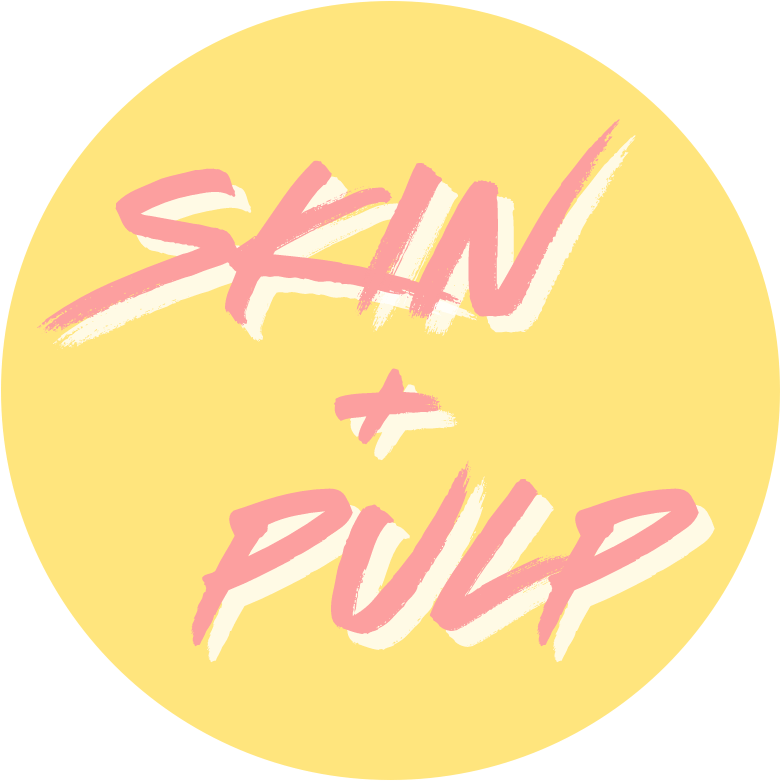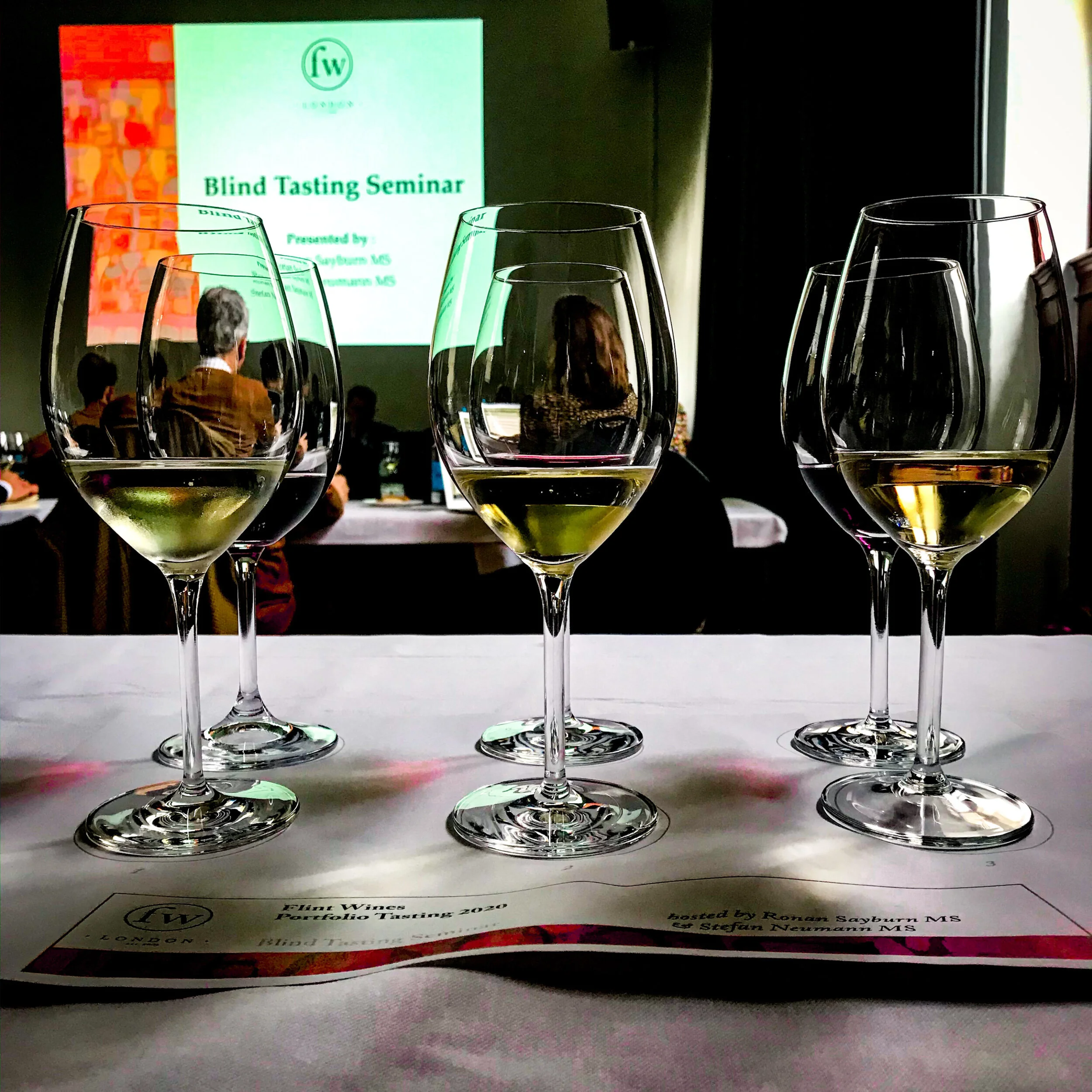A lesson on blind tasting
Picture the scene: A sommelier has a glass of wine in front of her. She eyes the wine carefully; looks at the colour of it, watches how it moves in the glass. She takes time to assess the weight of it, the potential age of it, the approximate alcoholic strength of it. She sniffs it, takes in the aromas, stage by stage. Eventually, she tastes it. She pushes the wine around her mouth, sucks some air over it, chews it a little and swallows. After making some mental calculations, she speaks. ‘Syrah. Côte Rotie. 2004.’ And then, after a pause, ‘Domaine Jamet.’
HOW ON EARTH...?! What sorcery is this? This is what you might be wondering, and you’d be right to do so. Well, it’s blind tasting - and, contrary to popular belief, it is not magic - it’s a skill. Ah, a skill! So it can be learned, I hear you say. Just the same as opera singing, I guess it can be learned - but I’d say it takes a fair bit of natural talent, too.
At the recent Flint Wines 2020 Portfolio Tasting, I went to a seminar all about blind tasting, hosted by Master Sommeliers, Ronan Sayburn and Stefan Neumann.
‘Think of blind tasting a bit like listening to music with the lights off,’ says Ronan. ‘You have to listen to every kind of note, every beat. You’ve got to concentrate on every single nuance of it.’
Ronan explains that when a wine is presented to you during a blind tasting, it’s very easy to go off first impressions and jump to conclusions (‘It smells like apples; it’s a Sauvignon Blanc’). However, this is not a very helpful blind tasting technique - it requires much more discipline. Wines can easily lead you in the wrong direction and you will be too blinkered to notice the nuances of them (he mentions that Hunter Valley Semillon and Clare Valley Riesling can too often trip people up if they are not careful). Ronan compared blind tasting to detective work - you find all the clues and gather the evidence, without jumping to conclusions. Then, you must be a lawyer and present your findings.
Stefan tells us that comparative tasting is the most effective way to learn how to blind taste. It might not be the cheapest way, but it is how you build your ‘tasting memory’ - something that you’ll draw upon every time you taste. Personal taste is also something that should not be discounted. Ask yourself, ‘Do you like the wine?’ This is actually helpful because you can access your personal memories of a wine to help you gather evidence (‘Oh no, I don’t like this - this tastes like tart, sour cherry. Exactly like the Beaujolais Nouveau I had last week, which I hated.’)
When you start a blind tasting, Stefan advises to look for the most important indicators first. ‘What sticks out the most? What is the most dominant in the glass? Look at the colour, viscosity and the initial aromas.’
We tasted six wines together and for each one, Ronan and Stefan shared their blind tasting techniques with us in real time. I’ll show you how it went down with the first wine - maybe you can use your detective skills as we go along to see if you can identify which wine it is...
Wine 1. We take a good look at the wine. It’s brilliant, bright, almost water white with a green glint. The colour alone indicates that it’s a super young wine, with high acidity, most probably fermented in stainless steel. It has just above average viscosity, indicating just above average alcohol (probably around 13.5%) and relatively low sugar. How cool is that? Knowing all of those things just by looking at the wine. Remember - no guessing yet!
We swirl and smell the wine. It’s pretty aromatic. Citrus - lime. Tree fruits - apple. Stone fruits - white peach. Tropical - passion fruit. Vegetal - cucumber, celery. It smells clean, showing it that it’s a pure style and probably made in a clinical environment. More of a modern style of winemaking?
We taste the wine. It has high acidity, which you should look for first when you taste. It’s dry and it’s all about the primary fruits. At this point you can elimate some grape varieties and wines - for example, it won’t be a creamy, oaky Chardonnay. It’s definitely unoaked - a fresh, youthful style of a pungeant grape variety.
Can you tell what it is yet? Aromatic, primary fruits, clean, no oak, high acidity. Could it be a Riesling? Hmm, no petrol notes and those green, vegetal notes are really evident. Sauvignon Blanc? Yes. New World or Old World? New World - that passion fruit is screaming out and I know where that is from. New World; New Zealand; Marlborough!
Next, it’s about knowing the winemakers and their styles and why they’ve made the decisions they have. I can’t pretend to be a Marlborough expert but if you are, you might have guessed correctly. It’s the Corofin Meltwater Sauvignon Blanc 2017, Marlborough, New Zealand!
A really great tip from Ronan was to ‘try and get into the mind of the winemaker - why are they making these decisions? What does it tell you about the grape variety?’
All of the clues are there. If there is oak, is it nice oak or is it oak chips? This will let you know if the wine is from a premium region or not. Is it new old or old oak? Ronan reminds us, ‘New oak smells like money!’ This narrows down the regions for you.
You might be thinking, ‘Yeah, this is a cool talent, but how does this help people in their everyday work in the wine world?’
Well, apart from being the king or queen of every dinner party, practising blind tasting skills does help in a lot of roles in the wine trade. If you’re choosing wines for a list, judging wines or buying wines in any capacity, practising blind tasting skills is useful because you get to know what to look for in a wine. You learn what the benchmark is for a good white Burgundy from the north of the region, or what to look for in a Pinot Noir from Oregon, for instance.
This fantastic masterclass has definitely inspired me to brush up on my blind tasting skills. If that means buying in a huge batch to do some comparative tasting, so be it!

